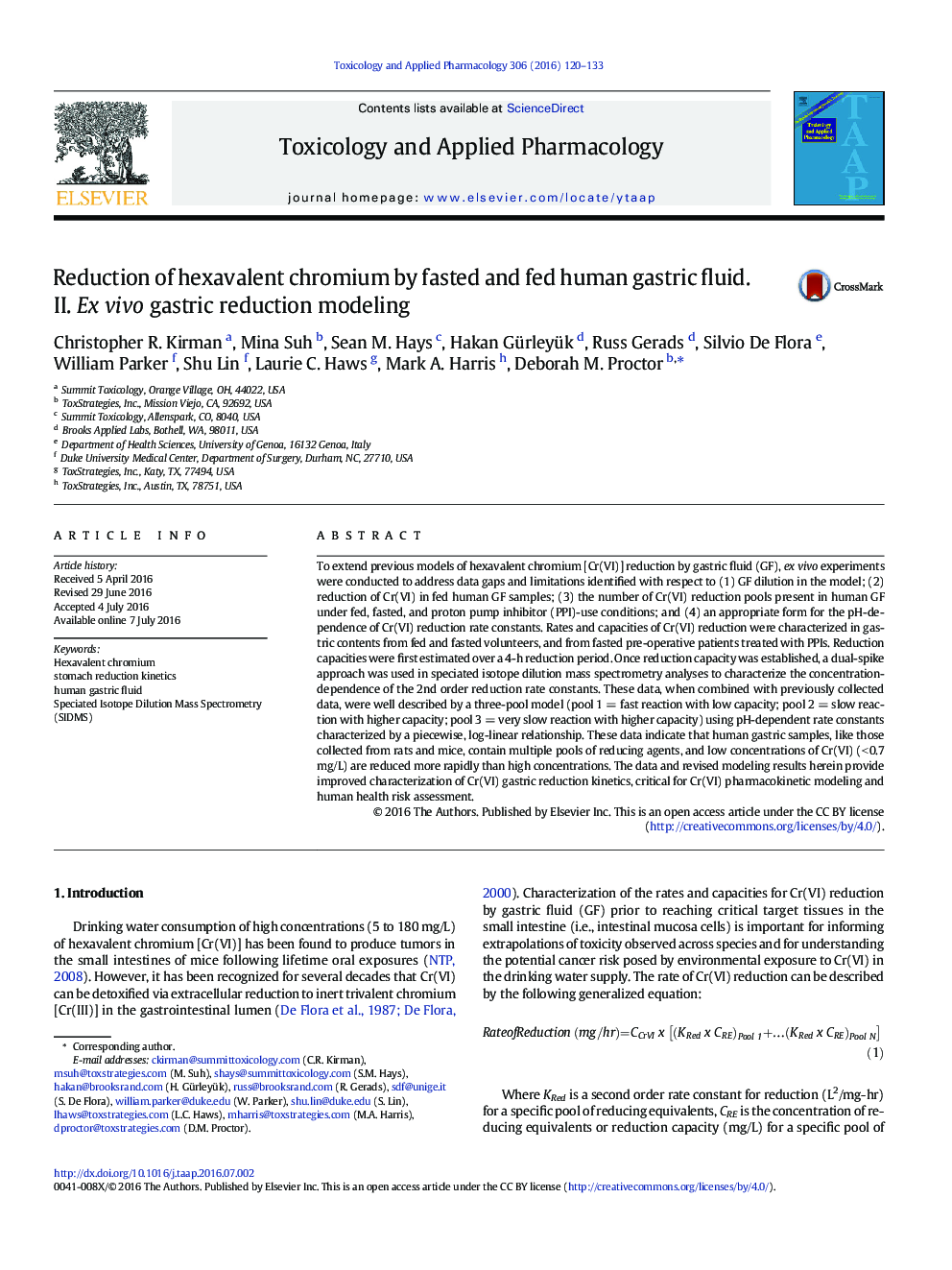| کد مقاله | کد نشریه | سال انتشار | مقاله انگلیسی | نسخه تمام متن |
|---|---|---|---|---|
| 5845881 | 1561156 | 2016 | 14 صفحه PDF | دانلود رایگان |
- SIDMS allows for measurement of Cr(VI) reduction rate in gastric fluid ex vivo
- Human gastric fluid has three reducing pools
- Cr(VI) in drinking water at <Â 0.7 mg/L is rapidly reduced in human gastric fluid
- Reduction rate is concentration- and pH-dependent
- A refined PK model is used to characterize inter-individual variability in Cr(VI) gastric reduction capacity
To extend previous models of hexavalent chromium [Cr(VI)] reduction by gastric fluid (GF), ex vivo experiments were conducted to address data gaps and limitations identified with respect to (1) GF dilution in the model; (2) reduction of Cr(VI) in fed human GF samples; (3) the number of Cr(VI) reduction pools present in human GF under fed, fasted, and proton pump inhibitor (PPI)-use conditions; and (4) an appropriate form for the pH-dependence of Cr(VI) reduction rate constants. Rates and capacities of Cr(VI) reduction were characterized in gastric contents from fed and fasted volunteers, and from fasted pre-operative patients treated with PPIs. Reduction capacities were first estimated over a 4-h reduction period. Once reduction capacity was established, a dual-spike approach was used in speciated isotope dilution mass spectrometry analyses to characterize the concentration-dependence of the 2nd order reduction rate constants. These data, when combined with previously collected data, were well described by a three-pool model (pool 1 = fast reaction with low capacity; pool 2 = slow reaction with higher capacity; pool 3 = very slow reaction with higher capacity) using pH-dependent rate constants characterized by a piecewise, log-linear relationship. These data indicate that human gastric samples, like those collected from rats and mice, contain multiple pools of reducing agents, and low concentrations of Cr(VI) (<Â 0.7 mg/L) are reduced more rapidly than high concentrations. The data and revised modeling results herein provide improved characterization of Cr(VI) gastric reduction kinetics, critical for Cr(VI) pharmacokinetic modeling and human health risk assessment.
Journal: Toxicology and Applied Pharmacology - Volume 306, 1 September 2016, Pages 120-133
